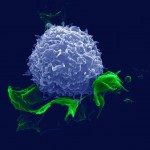Link to Pubmed [PMID] – 21145388
Free Radic. Biol. Med. 2011 Feb;50(3):469-76
Mitochondrial dysfunction and oxidative stress are hallmarks of various neurological disorders, including multiple sclerosis (MS), Alzheimer disease (AD), and Parkinson disease (PD). Mutations in PINK1, a mitochondrial kinase, have been linked to the occurrence of early onset parkinsonism. Currently, various studies support the notion of a neuroprotective role for PINK1, as it protects cells from stress-mediated mitochondrial dysfunction, oxidative stress, and apoptosis. Because information about the distribution pattern of PINK1 in neurological diseases other than PD is scarce, we here investigated PINK1 expression in well-characterized brain samples derived from MS and AD individuals using immunohistochemistry. In control gray matter PINK1 immunoreactivity was observed in neurons, particularly neurons in layers IV-VI. Astrocytes were the most prominent cell type decorated by anti-PINK1 antibody in the white matter. In addition, PINK1 staining was observed in the cerebrovasculature. In AD, PINK1 was found to colocalize with classic senile plaques and vascular amyloid depositions, as well as reactive astrocytes associated with the characteristic AD lesions. Interestingly, PINK1 was absent from neurofibrillary tangles. In active demyelinating MS lesions we observed a marked astrocytic PINK1 immunostaining, whereas astrocytes in chronic lesions were weakly stained. Taken together, we observed PINK1 immunostaining in both AD and MS lesions, predominantly in reactive astrocytes associated with these lesions, suggesting that the increase in astrocytic PINK1 protein might be an intrinsic protective mechanism to limit cellular injury.

